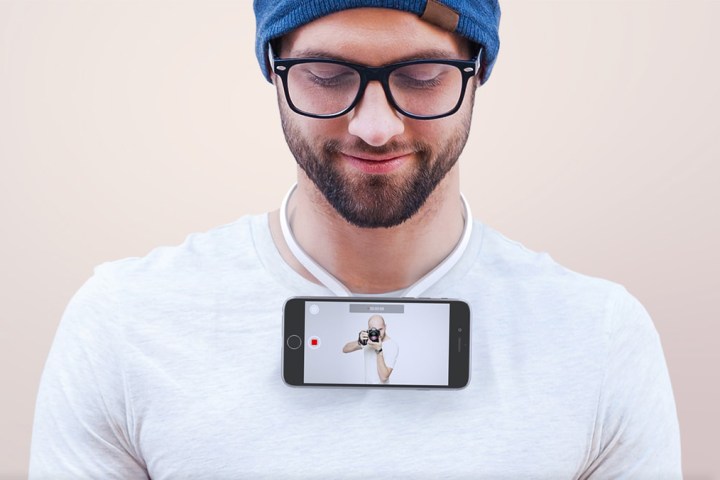
While you can opt for action cameras or even smaller point-and-shoot cameras for these POV shots, the most obvious solution for the majority of people is a smartphone.
Enter Povie, a new POV photo and video rig from photography manufacturer Edelkrone. Looking like a cross between a collar and necklace, Povie makes it possible to strap your smartphone to your neck and capture photos and video hands-free from a unique perspective.
To do this, MPovie relies on two main components: a circular rig that you wear around your neck and a dedicated clip that attaches to the back of your phone. Once the clip is secured to your phone, capturing POV imagery is as simple as snapping the phone into place and pressing record.

One of the key elements of Povie is its integrated tilt capabilities. After your phone is attached, you can simply tilt it up and down to adjust the viewing angle.
Below is a video of Povie in action:
Yes, it looks absolutely ridiculous. But sometimes you have to sacrifice a little dignity to capture the visuals you need for your next vlog or Snapchat story.
Except, dignity isn’t all you’ll be sacrificing. At $50, Povie isn’t cheap for a few pieces of ABS plastic. But if you want a way to capture POV video without dropping the dough on a GoPro, this may very well be your best bet.
Editors' Recommendations
- How to turn your old phone into a security camera
- This tiny sensor is about to change your phone camera forever
- The future of blood oxygen monitoring lies with your phone’s camera
- Vivo shakes things up with new gimbal-equipped X50 Pro camera phone
- How to use exposure compensation for perfect pictures with your camera or phone




